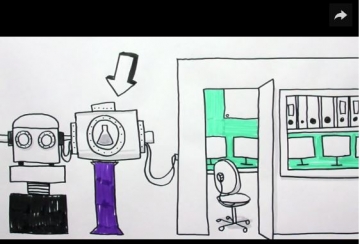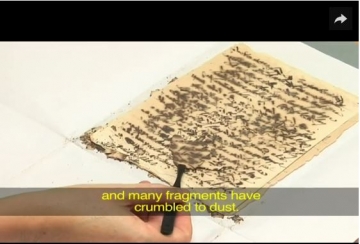
DiffAbs : Combiner la Diffraction et la spectroscopie d'Absorption des rayons X pour caractériser les matériaux
Une originalité de la ligne de lumière DiffAbs est mettre à disposition à la communauté scientifique un grand nombre de techniques instrumentales pour la caractérisation des matériaux désordonnés, polycristallins, texturés ou épitaxiés.
La ligne de lumière DiffAbs s'adresse à de nombreux secteurs de recherche académique et appliquée (industrie du pétrole, secteur du nucléaire, métallurgie) parmi lesquels la science des matériaux et la physico-chimie tiennent une place prépondérante.
L'intérêt de coupler la diffraction de rayons X et les spectroscopies de fluorescence X et d'absorption de rayons X est de garantir que l’ensemble des mesures sont effectuées sur la même zone de l'échantillon et dans des conditions physico-chimiques (température, pression, etc.) totalement identiques. Ceci est crucial pour établir des corrélations entre les informations données par les différentes mesures dans le cas de matériaux complexes ou en conditions extrêmes.
Les principales thématiques scientifiques abordées sur la ligne sont les suivants : comportement des matériaux portés à de hautes, voire très hautes températures, comportement mécanique de matériaux (contraintes résiduelles, sollicitations mécaniques), caractérisation des films minces et nanomatériaux, analyse des matériaux archéologiques et culturels, applications médicales.
L'équipe
Données techniques
3-23 keV for standard beam mode
3-19 keV for microbeam mode
∆E/E ~ 10-4
Bending magnet
1.1014 ph/s/0.1%bw @ 8 keV / 500mA ring current
4. 1013 ph/s/0.1%bw @ 20 keV / 500mA ring current
- Two bendable mirrors for harmonics rejection and meridian (vertical) focusing
- Si(111) Double crystal monochromator (DCM) with bendable 2nd crystal for sagital (horizontal) focusing
- Kirkpatrick-Baez (KB) mirrors for microbeam (~ 10μm) mode
- Circular Fresnel Zone Plate (sub-10μm beam size)
- 6+2 circles diffractometer (kappa geometry + analyzer crystal). Heavy load and cumbersome sample environment can be accommodated.
- Several heating systems :
(laser heating + levitating chamber (study of melting of glasses, oxides and ceramics up to T ~3000 °C)
conventional furnaces for powders, thin films and bulk (up to
1300°C)
- compact Peltier stage (T = -20°C to +50 °C)
- biaxial tensile machine for stretchable thin films
- optical microscope (sample visualisation and pre-alignment) for μbeam experiments
- several 1012 ph/s @ 8kev / 500 mA ring current (~250x300μm2 FWHM, 0.24 x 3.5 mrad2, vert. × horiz.) with Si(111) DCM and at
- 109-1010 ph/s @ 8kev / 500 mA ring current (~10x10μm2 FWHM, 2 x 1 mrad2, vert. × horiz.) with KB [still to be optimized]
- Zero- dimensional (YAP or LaCl3 scintillators)
- Zero- dimensional (Avalanche Photo Diode, APD)
- thin Si diodes (I0 monitors),
- diodes (transmitted beam) for X-ray absorption experiments
- 4-element SDD: silicon drift detector for X-ray fluorescence,
- 2D Cameras (XPAD, MAR345 image plate, …) on-loan basis from Detectors Group, shared with other beamlines.
Thématiques scientifiques
| Materials Science | - in-situ studies of mechanical properties of materials (crystalline metallic layers, multilayers, polymers, …) under bi-axial tensile stress. - in-situ structural studies of glasses, oxides and ceramics at very high temperatures (by XRD and XAS combination) - phase transitions on different materials - 1beam studies (local probe) for structural properties : 1XRD, 1XAS, 1XRF and combination |
|---|---|
| Biology, Biomaterials |
- Pathological calcifications |
| (Semiconductor) nanostructures |
- local properties in lithographed semiconductor epitaxial thin films, quantum wells/wires/dots, nanostructures (Laterally resolved High resolution XRD by using x-ray focused beams). |
| Soft condensed matter |
- in-situ studies of mechanical properties of polymers (rubbers) under uniand bi-axial stress. |
| Imaging / cartography / local probe analysis |
- local probe (10 1m and sub-101m X-ray spot) imaging / mapping / analysis with various contrast mechanisms and information (diffraction, fluorescence, spectroscopy). |
| Art and cultural heritage / archeology |
- In situ monitoring of dechlorination treatment of marine archaeological artefacts by combination of microbeam techniques |




